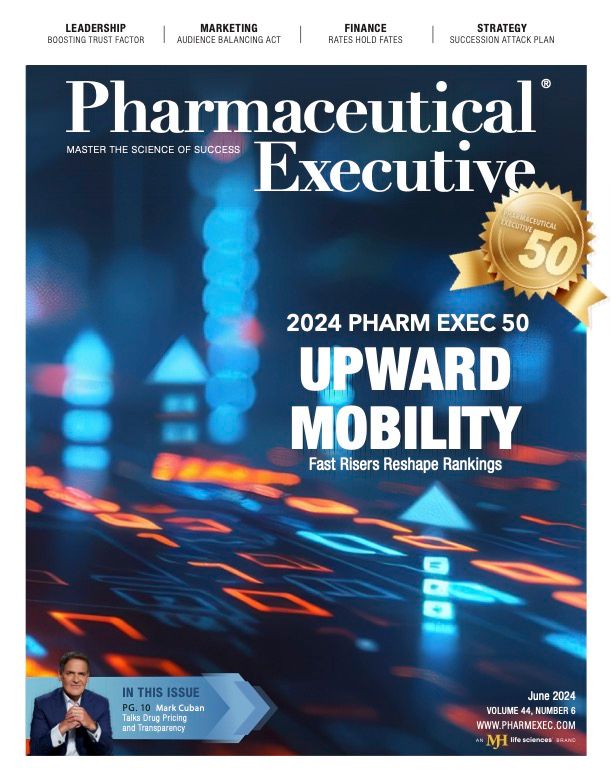Biotech Performance Remains Tethered to Rate Expectations
The silver lining: Sector fundamentals continue to be positive.

Biotechnology stocks and the XBI index have been, for the most part, inexorably and tightly inversely correlated with the direction of travel in interest rates since 2021. As likely the longest-dated asset class, biotech stocks have been the hardest hit victim of an epic and historic Fed-induced climb in interest rates. This came in direct response to the post-COVID-19 vaccine-led “reopening” of the economy and subsequent V-shaped sharp recovery—which overheated and sparked a tight labor market and high inflation.
But in the fourth quarter of last year, economic data pointed to signs that the Fed’s efforts were having the desired effect, taming inflation and the economy, and investor expectations shifted to a view that the Fed would pivot from raising rates to lowering them sooner versus later. It was no longer “higher for longer,” but a question of when—not if rates will decline. With that in their line of sight, those in the investment community began focusing less on macro factors to assign valuation metrics and leaning more decidedly on fundamentals.
This pivot had the expected result—a long anticipated and welcome significant outperformance for biotech ensued. In the fourth quarter of 2023, the XBI soared by a staggering 38% off its lows set in October to actually finish the year in the green—up 7.8%—thereby saving investors in the sector, who were spared a third straight year of losses. This rally was led first and foremost by a drop in interest rates and fueled by expectations for more of the same in 2024, but was complemented by strong M&A activity and always underpinned by continued gains on the innovation front, which were overruled by the macro environment.
Unfortunately, the line of sight was blurred by continued volatility in economic data, and subsequent reads suggest a pivot back to “higher for longer.” Biotech companies are now back to trading in a seesaw correlation with rates—we can’t go up until they go down.
As of June 1, the XBI is trading flat on the year at $89 off the recent high of $103.52 at the end of February 2024. But that number was still above the low of $65 in October of 2023 when the rally began, and obviously significantly below its all-time high of ~ $141 in October of 2020. The S&P 500, on the other hand, is up almost 11%.
According to the minutes of the Federal Open Market Committee meeting in early May, it is clear that the Fed has no intention of lowering rates any time soon as inflation remains high and also such action would likely require that labor markets weaken significantly.
So, the wait for rates to stabilize and decline continues. In the meantime, biotech fundamentals remain decidedly positive on balance. Despite the sector’s underperformance, the follow-on market and M&A activity are at record levels. According to Brian Gleason, managing director at Raymond James, the secondary financing market is on track for a record pace with over $22 billion raised thus far; the closest comparison for this same time period was in 2021 at $18.8 billion. This means that companies generating good data can get funded and the number of organizations with extended cash runway is increasing. That said, there are still the “haves” and the “have nots”—microcaps are having an increasingly difficult time getting funded, have shrinking cash runways, and restructurings, mergers, and closures will continue to plague this group.
M&A, on track for a record pace in 2024, should continue to fuel positive performance, as the large-cap acquirers have $1.37 trillion in cash, according to EY’s most recent annual Firepower report. M&A has always been a core pillar of growth strategies but the acceleration in pace reflects a high sense of urgency to access external innovation to expand their portfolios and fill the growth gap from impending losses of exclusivity for blockbuster drugs with sales that exceed $350 billion. These exits place big performance gains and new cash into sector funds, which will be redeployed into new investments in companies with attractive assets.
Scientific innovation remains high and is the underpinning of the money flowing into the sector. These strong fundamentals, coupled with an inevitable slowdown in the economy and lower interest rates, position biotech for outperformance later in the year.
Barbara Ryan is Founder, Barbara Ryan Advisors, and a member of Pharm Exec's Editorial Advisory Board

Regeneron, Roche Launch Major US Expansion Plans to Meet Growing Demand for Biologics and Innovation
April 22nd 2025With combined investments exceeding $53 billion, both companies are deepening their US presence through expanded biologics production, gene therapy capabilities, and next generation R&D centers.